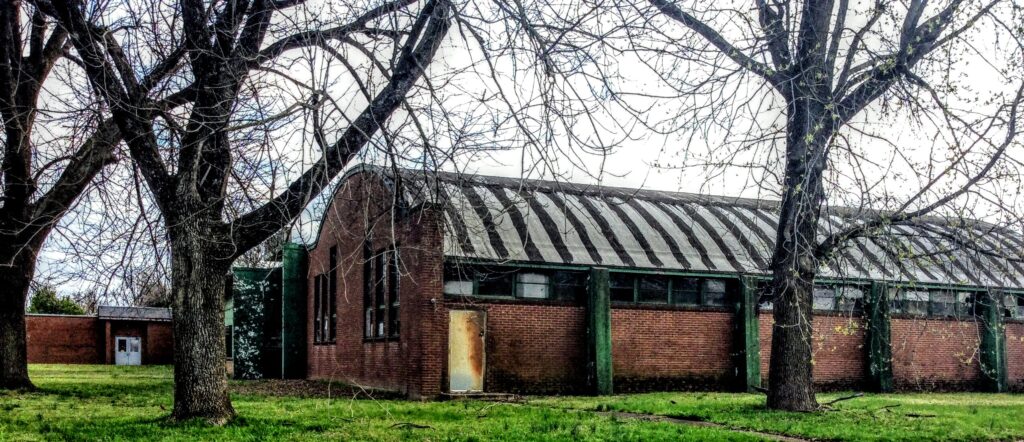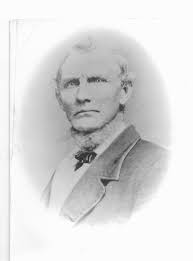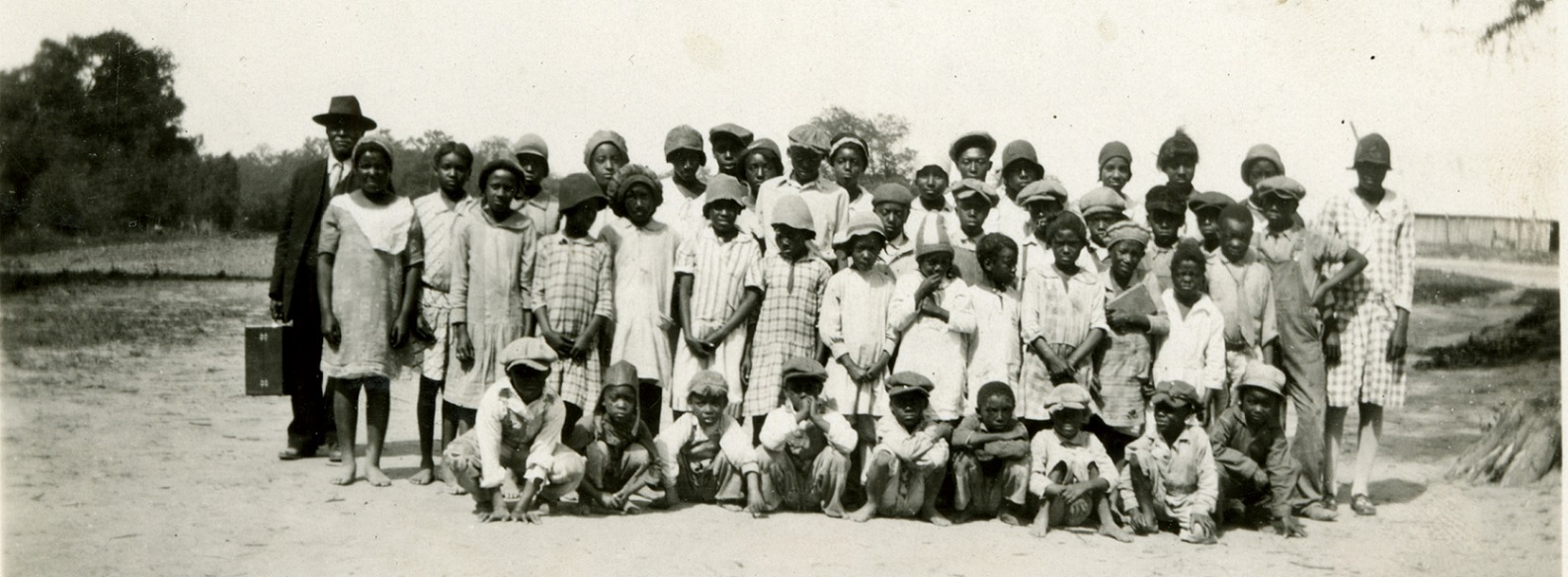
African Scientific Research Institute
Forever indebted to those who paid the supreme price of slavery in the land of the free

Forever indebted to those who paid the supreme price of slavery in the land of the free
Saving Lincoln Jr High School in Sikeston Missouri is the First Step of ASRI’s goal to preserve a history that has been lost in time. A history of refugees who were forced to leave their homes traveling North looking for work family and livelihood.
Southeast Missouri Delta Heritage Development Project in Sikeston/Hayti, Missouri
African Scientific Research Institute (ASRI) is currently a regional company operating in the revitalization of historic Rural-settlements dormant economy. A recognized doable niche in rural diaspora towns and settlements located in the federally designated Historically Underutilized Business Zones (HUBZone’s) and Opportunity Zones in the Mississippi River Delta basin. “The immediate focus is on” Southeast Missouri Delta Heritage Development Project in Sikeston/Hayti, Missouri, Phase One will commence in September 2021; planning and education programs designed to encourage preservation at the local level by providing organization human resources, experts, and expertise for the acquisition, maintenance, and preservation of historic landmarks and memorials burial grounds projects. This resurgence of economic growth accomplished by encouraging residents to take stock of their communities with the goal of establishing long-term investments and the ability to develop job creation in HUBZone’s areas of the state of Missouri
Our mission is dedicated to “The Preservation and Search of the land for First-Generation Enslaved African Burial Grounds.” ASRI is committed to tracing the historical footsteps of African-Americans, both free and enslaved, who lived in America during the 17th-19th centuries. Cultural, genealogical, and biological histories can be reconstructed to provide an essence of African Americans and highlight their contributions up to the reconstruction era.



Southeast Missouri Black-towns represent Resilience and Relevance:
Exploring all possibilities to save Historic Places and Things that originated during the Great Northward Migration out of the rural Southern United States to the Midwest urban areas between 1916 and 1970 also known as “the Black Migration”
Racial segregation and discrimination in the Southern states where Jim Crow laws were implemented and enforced by Terrorist groups forced (6) millions of blacks on the trail of freedom seekers, many to Migrated into the Bootheel of Missouri.
The African Scientific Research resolution makes the recommendation that Lincoln jr. High School in Sikeston is placed on the National Register of Historic Places!

ASRI Researchers will Conduct critical time-sensitive research and planning to identify and conduct oral interviews of individuals who have attended iconic black Lincoln Jr High School in Sikeston, MO. in order to preserve the history of The Great Black Migration and peopling historic places [sanctuaries].

ASRI is working with Lincoln University (HBCU) History Department to help establish
community outreach programs, to assist ASRI in conducting public discourse sessions to
determine how this public space could be utilized. Lincoln University will also assist in
establishing committees to bring the community together in a cohesive way. ASRI will also
work with the city of Sikeston to see how this property can be used to create added value
for the community. ASRI’s long-term goal is to identify and designate Lincoln School as a
historic site is so it can be used as a public hub for establishing a repository for collecting,
analyzing, and preserving historically significant artifacts from the region. It will become a
central site for developing a network for cultural tourism in the Bootheel region.
Preservation of Lincoln School will tell the story of America and enhance racial
reconciliation and awareness of the contributions of African Americans to the agricultural
and industrial economy of America.
Strategically, the first step. Uncovering backstories in the turbulent era of the Great Migratory movement surrounding the peopling of Southeast Missouri’s Delta rural region to full efficacy there are two goals; to establish Lincoln Junior High School as a major tourist attraction and to engage the citizenry in public discourse. We want to improve the infrastructure status for Blacks in Sikeston, Missouri by getting as many structures as possible onto the National Registry of Historical Places and Things.

Tens of thousands of students and parents passed through this noted funnel, nourished by instructors and instruction administered from HBCU alumni. The halls swelled with newly
arriving students for 68 years all educated during the height of the great migratory movement headed north.
Sikeston Sunset Addition became a sanctuary for bewildered travelers seeking a better life beyond backbreaking unrewarded work as sharecroppers in southern states. Many families desired an equity solution beyond the largest African-American settlement in the Southeast Missouri region for more profitable venues relevant to this backstory.
In its heyday of community prosperity and self-sufficient economics, most of it generated from family members with new found work from the industrial complex, the Black population increase stayed constant because of the agricultural base. Sikeston as well as many Black towns and rural enclaves were a contributing factor as sanctuaries in what is known as “Sunset Addition” relegated to racial segregation.
The migratory movement from antebellum southern states framed by the mighty Mississippi River basin to the west is our focus. Louisiana, Mississippi, Tennessee and Arkansas travelers were funneled directly into a concentrated Black force in-which great changes took place. In many cases lifestyles improved, anxieties dissipated, they found excellency in schooling and sustainable economies that created a multitude of jobs. Mostly agriculture-based laborers and above all families, were “forged in the crucible of aspirations” for freedom, justice, and equality that once seemed impossible.

Sunday, November 11, 2001
By Sam Blackwell, Southeast Missourian
SIKESTON, Mo. — Sikeston was known as Big Prairie to the first settlers who arrived from the American Southeast at the end of the 18th century. John Sikes, a merchant, married into the Stallcup family that owned much of the land.
“I, John Sikes, am going to start me a town and I am going to call it the town of Sikeston,” he stated in the land title setting up the town in 1860.
During the Civil War, Confederate guerillas tried to hang Sikes from an oak tree in front of his store but cut him down when his wife sent a black girl running over with $100. But in 1867, Sikes was killed trying to convince a drunken acquaintance to get on his horse and go home. The man shot him in the back and was never seen in the region again.
In many ways, Sikeston has always been Southeast Missouri’s frontier town, a place attractive to immigrants from many backgrounds and ruled by self-made men and sometimes by violence.
“Sikeston has always had a rough edge because it was on the edge of the swamps,” says Dr. Frank Nickell, director of the Center for Regional History at Southeast Missouri State University. “This was a frontier in the 20th century when we often think the frontier was over.”

At the beginning of the 20th century, those who owned the rich land claimed by draining the vast swamp known as the Missouri Glades bought for 60 cents an acre and sold for $200 an acre. At the beginning of the 21st century, a rodeo is Sikeston’s biggest event of the year. And in pockets of black poverty like Sunset Addition and Clayton Addition, part of the legacy of the mammoth drainage project, lawlessness has taken root.
A nearly impenetrable swamp covered Southeast Missouri below Benton, Mo., until the first years of the 20th century. The exceptions were the land formation to the west known as Crowley’s Ridge and a much smaller rise running north to south from the Benton foothills to New Madrid, Mo., that came to be called the Sikeston Ridge.
The Sikeston Ridge is barely discernible from the flat landscape that surrounds it.
“People on the tour buses laugh at me when I talk about the ridge,” says Judy Bowman, who directs the local museum called the Sikeston Depot.
One of the first rail lines west of the Mississippi River ran to Sikeston. The Cairo & Fulton Railroad was the only way across the swamp and made it possible to get at the timber the swamp contained. Sikeston was the railroad’s terminus until 1872.
Then came loggers
Sikeston remained a tiny, isolated farm community until the Little River Drainage District began reclaiming millions of acres of swampland in 1907. When the first dam was built on the Mississippi River in Keokuk, Iowa, in 1913, ending log drives down the river, loggers from the north woods came to Southeast Missouri to help chop down these newly accessible forests. The completion of the Panama Canal in 1914 brought more workers here from Panama.
At the time, The Little River enterprise was the largest drainage project in history. Families of hunters and trappers who had lived in the swamp for generations were discovered when the swamp was drained.
“All of a sudden, we’re in the richest farmland in the world,” Bowman says. “Farmers found out they could double their crops.”
Large milling companies moved in and began consolidating. By 1910, the Scott County Milling Co. was selling flour to 22 states and 10 foreign countries. Trains carried huge crops of corn and watermelons to distant markets.
Farmers Supply Co., owned by C.D. Matthews, boasted that it sold “Supplies for all mankind.” Among them were dry good, groceries, hardware, furniture farm machines, women’s fashions and carpets. Matthews also established the Bank of Sikeston, the only local bank that survived the Great Depression.
Says Nickell: “It was a typical frontier economy. Some people profit. Most of the people go hungry. Most of the people ended up in service jobs.”
The cotton boom
Sikeston has no legacy of slavery. Relatively few blacks lived in Sikeston until the boll weevil decimated cotton crops throughout the South at the beginning of the 1920s. Southeast Missouri farmers then began planting cotton. “Blacks came by the thousands because there were jobs,” Bowman says. “We had a whole new industry just booming.”
Most of Sikeston’s blacks lived in the Sunset Addition, a collection of small houses and shacks built on the old Tri-County Fairgrounds west of the city. The city was segregated, but Sunset had everything the residents needed.
“We thought it was the most perfect place,” says Sue Marble, who was born in Sunset in 1928. “Everyone owned their own home at that time. There were flowers in the yard, and some had chickens in their back yard.”
Sunset had midwives, a cab service, grocery stores and its own schools and ball teams. Marble recalled all manner of businesses in an area that now is rife with abandoned houses and others that need to be torn down. But churches were the main center of activities.
Marble describes the relationship between blacks and whites through the husk of the 20th century as “strained.” “Blacks stayed among themselves and whites did the same. We had everything we needed for our livelihood, and we didn’t bother with theirs.”
Sponsored
Cleo Wright lynching
The lynching of a 25-year-old black man named Cleo Wright in January 1942 is a seminal event in Sikeston history. The story has been passed down through both black and white families, no doubt in differing versions. Wright’s was the last lynching that occurred in Missouri and drew national and international attention.
Wright was arrested after breaking into a house occupied by two women whose husbands had been called up for service in World War II. One of the women was stabbed in the 1:30 a.m. break-in. A night marshal arrested Wright 30 minutes later in Sunset Addition. Blood was all over his clothing. During the ride to jail, Wright pulled a knife from his boot and stabbed the night marshal in the mouth. The lawman shot Wright four times during the fight.
Both of Wright’s victims survived.
Wright was treated at the hospital and taken to the city jail, where he lay barely alive the next morning as 400 or 500 angry citizens gathered outside. The mob eventually forced their way into the jail, overcoming some law-enforcement officers and prosecuting attorney David Blanton.
They dragged Wright down the courthouse steps by the feet, his head bouncing on each step. Then they tied his legs to the bumper of a maroon car. A parade of cars with blaring horns followed as he was dragged through town to the Sunset Addition.
There Wright’s naked body was set afire. Onlookers heard him cry out once. The charred remains lay there for hours before a city dump truck picked the body up and took it to City Hall.
A number of Sikeston’s most prominent citizens participated in the lynching that Sunday morning, according to Helen Reuber in “As I Remember It,” her book about life in Sikeston during the 20th century. Reuber’s husband, Dr. H.E. Reuber, told her of watching from his second-story window in the Scott County Milling Co. building.


Dominic J. Capeci Jr., author of the 1998 book “The Lynching of Cleo Wright,” has said the black citizens of the Sunset armed themselves after the lynching. The governor sent troopers.
Blanton tried and failed to convince a grand jury to return indictments against the mob leaders. Prosecutors also brought evidence before a federal grand jury in St. Louis, marking the first time the federal government had involved itself in a civil rights case. Though no indictments were returned, the Cleo Wright case set a precedent for the civil rights prosecutions that followed in the 1960s.There are blacks today who incorrectly but perhaps understandably believe the Sunset Addition got its name that day, when groups of white men told blacks they had until sunset to leave town. Nearly 100 residents of the Sunset Addition did leave and never returned after Wright was lynched, according to Capeci. Whites now leaving Ironically, the 2000 census shows that it’s whites who are now leaving Sikeston. While the black population increased from 2,936 to 3,800 between 1990 and 2000, the white population decreased from 14,577 to 12,832 over the same period.
Arthur Bruce was Sikeston’s police chief from 1956 until a back injury forced him to retire in 1973. Now in his 80s, he grew up in a poor white area of Sikeston known as Dog Trot and another area near Sunset Addition called Frisco.
As police chief, Bruce did not have to deal with the drug problems and the proliferation of handguns to come. He describes a relationship between police and blacks in which he used to make friends with black children by buying them ice cream and giving them rides to baseball games. In recent years, police cars and fire trucks that have gone into Sunset Addition sometimes have been pelted with bottles and rocks thrown by groups of black youths.
Bruce tells a story that illustrates his approach to policing Sunset.
Around 1960, a new city councilman wanted to do something about gambling in Sunset and enlisted the support of some white ministers. Bruce offered to take the ministers on a Saturday night tour of some of the Sunset joints where he knew people gambled in back rooms.
At one, the ministers saw 6 cents being gambled on a poker table and 15 cents at stake on a craps table. His attitude was that gamblers weren’t hurting anyone. “They’re not out here stealing or breaking into your home,” he said.
He offered to take the ministers downtown or to the Sikeston Country Club if they wanted to see some gambling with higher stakeThe men who operated the popular taverns exercised power in Sunset. “They called that their territory,” he said. “Anything that went on, they knew it.”
Black school closed
Like others, Bruce blames the closing in 1968 of the Sunset Addition’s all-black Lincoln Elementary School with beginning the buildup of troubles in Sunset. “There was nowhere for them to go,” he says.
Sunset lost the core of its identity.
“When they took the school away, that really devastated us,” said Jessie Lane, who moved to Sunset Addition in 1954. “We no longer had children going to school in our neighborhood.”
In early October 1971, 75 black students at Sikeston High School boycotted classes to protest overcrowded buses, unfair discipline of black students and the need for a greater black voice in creating school policy.
Later that month, 28 black students were arrested at the high school after a two-hour confrontation with Scott County sheriff’s deputies, Sikeston police and the Missouri State Highway Patrol. All were charged with peace disturbance and unlawful assembly.
In the 1980s and continuing into the 1990s, the epidemic of crack cocaine that swept the United States festered in Sikeston’s poorer areas and led to an increase in other types of crimes, ranging from thefts to homicides. Sunset Addition became a hot spot of crime and violence.
“When the drugs started really getting going, everything else would increase to support their habit,” says Capt. Joe Sebourn, a 31-year veteran of the Sikeston Department of Public Safety.
Statistically, the number of homicides in Sikeston has not varied much since 1980, one or two per year, but Sebourn points out that the bodies of four Sikeston murder victims were found in the county last year and this year. Those count as Scott County homicides.
The crime statistics that point to the difference crack cocaine made in Sikeston in the past 20 years show the jump in robberies from 13 to 34 and in felonious assaults from 18 to 127. Felonious assaults involve a weapon.
“Most of the increase is probably related to drugs,” Sebourn says.
The Sikeston DPS has no recent figures for drug arrests.
Neighborhood downturn
Marble recalls when the downturn began in Sunset. “You could tell something was going on,” she said. “Homeowners began moving away from the Sunset area.”
Marble moved out of Sunset into the Clayton Addition because buying a house was cheaper than remodeling the one she had.
Others began moving in from other towns. The area’s housing stock began deteriorating. “A lot of the property belonged to white people,” Bruce said. “They didn’t keep it up.”
In 1994, the government seized 27 pieces of real estate, bought with cocaine profits, from convicted drug dealer Louis “Babe” Jimerson.
Stores that combined low prices and convenience had the same effect on businesses in Sunset they did on businesses in Sikeston’s downtown. One by one, they began disappearing, along with activities for young people.
Positive signs
But there are positive signs as well. Groups like Mission Missouri provide programs ranging from a soup kitchen to drug treatment. The Daughters of Sunset raise money for scholarships.
Drew Juden, a longtime member of the Sikeston DPS, became the Sikeston police chief in April. Under his guidance, the number of arrests and crimes in Sunset seems to have settled down, though no statistics yet exist to back up the impression.
“I think we’re getting a lot better cooperation out of the public,” Juden says. “A lot more crimes are reported to us than in the past. I think people are getting tired of putting up with the stuff they used to turn their cheek to.”
Recently, violence has shifted from Sunset Addition seven blocks away to Clayton Addition, which has a younger population. On the evening of Sept. 20, a crowd estimated at between 100 and 150 people aimed bottles and rocks at DPS officers when they tried to arrest a man suspected of breaking out the rear window of a vehicle.
The same month, Harry Howard organized “Return to Sunset Day,” a reunion of Sunset residents he hoped would help restore pride in the community. Hundreds of people turned out for a day of food and music of reminiscing about Sunset as it used to be. Howard brought photographs of events that occurred when Sunset was a thriving and healthy place to live.
“People had such dignity and respect,” he said.
sblackwell@semissourian.com
335-6611, extension 182
© 2016 Southeast Missourian · Cape Girardeau, Missouri

Many stories and archives of Sikeston Mo. have been gathered from many sources. Currently, much of the content comes from the dissertation and book research of Heidi L. Dodson, who grew up in Sikeston, Missouri. This includes oral history interviews, some of which Dodson did as a graduate student while participating in a project called Breaking New Ground: A History of African American Farm Owners Since the Civil War. This NEH-funded project was led by historians Dr. Adrienne Petty and Dr. Mark Schulz.
The Missouri Indians were a part of the southern Sioux tribes who lived along the Missouri River. Missouri our state was named after the Missouri Indians because people started marking their maps Missouri where the Missouri Indians lived . That is how our state got it’s name meaning ‘‘ people of the big canoes .’’
Centuries before the terms Native American or Indian were necessary, the tribes were spread throughout the Americas. Before any white man set foot on this land, it was settled by the forefathers of bands we now call Sioux, or Cherokee, or Iroquois.
To soothe these fears, in 1851 the U.S. government organized a conference with several local Indian tribes and established the Treaty of Fort Laramie. Under this treaty, each Native American tribe consented to a bounded territory, allowed the government to construct roadways and forts in this territory and pledged not to ever go after settlers; in return the federal government agreed to honor the boundaries of each tribe’s territory and make total annual payments to the Indians. The Native American tribes responded peacefully to the treaty; in fact the Cheyenne, Sioux, Crow, Arapaho, Assinibione, Mandan, Gros Ventre and Arikara tribes, who entered into the treaty, even agreed to end the hostilities between their tribes to be able to accept the terms of the treaty.
To learn more about the Native American Indian Tribes in Missouri when the French and English settlers came view this link to learn more
© African Scientific Research Institute 2024. Powered by WordPress